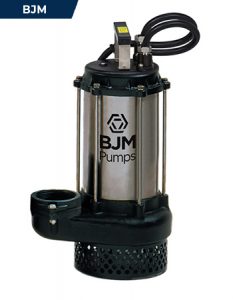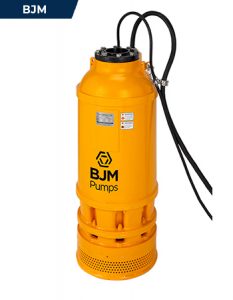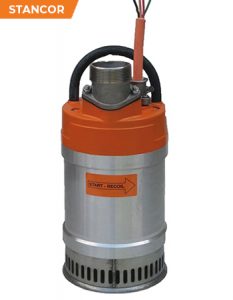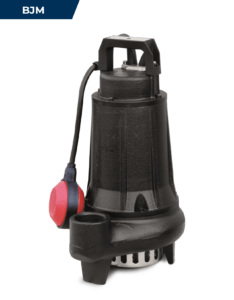
Dewatering Submersible Pumps
Dewatering Submersible Pumps
Dewatering pumps belong to the centrifugal pump class. The pumps remove unwanted water from sites, helping to dry out the location or make it conducive to construction and other activities. Submersible dewatering pump systems can be useful in basements, construction sites, flooded fields, or mines.
Industrial Flow Solutions specializes in the design, manufacturing, sales, and service of submersible dewatering pumps. Choose from various models from BJM Pumps® and Stancor®. Contact our team to learn more about our offerings and which pumps best serve your needs.
Advantages of Submersible Dewatering Pumps
Dewatering pumps create suction to draw water into the pump and out of an area. Our dewatering pumps range in size from 0.5 to 75 horsepower and depending on the system can deliver pressures as high as 195 psi and flow up to 4,000 gallons per minute.
Dewatering pumps can either be:
- Vertical discharge, meaning they have a streamline profile well suited for applications with a narrow basin
- Horizontal discharge, which allows for use with slide rails for easy maintenance.
The most significant advantage of submersible dewatering pumps over other pumping systems is their portability. The pumps are typically small, compact, durable, and lightweight.
Submersible dewatering pump systems are ideal for various applications, from home drainage to mines and tunnels. Some of our products are built to perform in the toughest environments—corrosive, high-temperature, and explosion-proof conditions.
For example, the explosion-proof JX series is corrosion-resistant and made from cast 316 stainless steel wet ends with no welds, making it among the most durable pumps in our catalog. The XP-JX series also meets FM requirements for Class 1, Division 1, Group C & D hazardous locations.
Custom Dewatering Pump System Manufacturer
With over 200 years of technical and application experience, IFS can confidently design, build, test, install, and work with partners through the post-install process. We built our state-of-the-art, in-house pump testing facility in New Haven to Hydraulic Institute Standards, enabling us to perform comprehensive tests and provide rapid results.
Your new dewatering submersible pump can help lower costs, increase efficiencies and minimize environmental impact. From explosion-proof to portable options, find a custom manufactured pump solution for your environment.
Dewatering Equipment to Solve Your Water Problems
Our team at IFS is ready to create your submersible dewatering pump systems. Let us turn your flow problems into flow solutions. With our services and pumps, you can experience lower costs and improved efficiencies with minimal environmental impact. Reach out and learn more about our process, products, and team. We commit to industry-leading response times and offer a human touch from initial inquiry to post-installation support.
Submersible Pump FAQs
What is a submersible dewatering pump?
A submersible dewatering pump is a type of pump that is designed to remove water from areas where it is unwanted. The pump is “submersible,” meaning it operates while fully submerged in the water it is designed to remove.
What is the difference between a water pump and a dewatering pump?
Water pumps belong to a broader category of water management tools. Water pumps can be used for irrigation, water transfer, and maintaining water pressure.
While dewatering pumps can technically fall under the water pump category, they have a specialized and unique purpose. Dewatering pumps work to specifically remove unwanted water (flooding or standing water) from areas such as construction sites, basements, mines or flood zones.
Submersible dewatering pumps are built to fully submerge under water and can stand up to rugged or challenging water removal environments.
Are there disadvantages to using a submersible pump?
Submersible pumps are exceptionally effective at clearing unwanted water and stand up to tough jobs. They outperform many above-ground pumps, however there is a longer and more complex installation process. Submerging the pump can add a more challenging layer to the installation process.
The other potential drawback could be the higher upfront costs. However, in situations where flooding is frequent you cannot risk the damage caused by insufficient water removal.
How do you choose a dewatering solution?
The choice of dewatering method depends on factors like soil type, depth of excavation, groundwater levels, and the scale of the project. Sometimes, a combination of techniques may be used for effective dewatering. Submersible dewatering pumps are an excellent solution for basements, construction sites, flooded fields and mines.
Featured Products

JH Series
- HIGH HEAD (<140’) general sump dewatering pump
- Cast iron construction
- Solids capability up to 3/8”

KHD/KHH Series
- HIGH FLOW (<1000 GMP), or HIGH HEAD (<400′) abrasion-resistant, dewatering pump
- High chrome iron impeller
- Ductile iron wear plate and pump volute, hard metal components

P/S Series
- Heavy duty, dewatering pump with cast 356 T6 aluminum motor housing
- Stainless steel handle and discharge connection
- Wear-resistant, nitrile rubble/wear plates.

BIC Series
- Submersible Electric Pumps with Two Vane Impeller
- Ideal for clear water or light sewage
- 60Hz 1ph and 3ph options available
array(7) {
["id"]=>
int(1263)
["gated"]=>
bool(false)
["title"]=>
string(90) "Boiler Blowouts: Renewable Energy Plant Uses BJM KBF Series Hi Temp Slurry Pump-Case Study"
["excerpt"]=>
string(879) "Boiler Blowouts: Renewable energy plant installs hi-temp slurry pumps to eradicate pump failures. Covanta Energy is one of North America’s largest owners and operators of waste-to-energy plants and other renewable power facilities. Their 60+ facilities produce electricity for about one million homes. The Covanta Dade energy plant in Florida processes 4,200 tons of municipal solid waste and biomass fuel daily. The plant burns that waste to produce electricity, boiling water to turn turbines that generate 77 megawatts of power. During the boiler blowout procedure, 185°F water is pumped from the system to minimize buildup of scale and corrosion. Read about Covanta engineers' pump solution that could stand up to 185°F water, was resistant to corrosion and abrasive sand and grit, and a pump that was available with the high head option needed for the application."
["show_full_excerpt"]=>
bool(false)
["url"]=>
string(143) "https://flowsolutions.com/resources/boiler-blowouts-renewable-energy-plant-installs-hi-temp-slurry-pumps-to-eradicate-pump-failures-case-study/"
["download"]=>
string(117) "https://flowsolutions.com/wp-content/uploads/2020/09/IFS-RenewableEnergyPlantHiTempSlurryPump-KBFSeries-CaseStudy.pdf"
}

